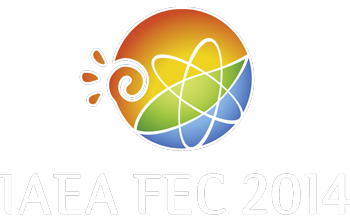Speaker
Dr
Ihor Holod
(University of California Irvine)
Description
Plasma confinement and stability can be significantly affected by large scale electromagnetic processes, while the last ones can be triggered by microscopic wave-particle interactions. Thus non-perturbative treatment of kinetic effects is needed for fully self-consistent description of tokamak plasmas. In this work we present recent progress in gyrokinetic simulation of electromagnetic instabilities excited at plasma edge region, using global gyrokinetic particle-in-cell code GTC. We also demonstrate new extended GTC capabilities allowing simulation of tearing and internal kink modes.
Gyrokinetic simulations of plasma edge region have been done using realistic DIII-D equilibrium and profiles. The electrostatic simulations in the middle of the pedestal recover instability with a mode structure peaked at $\theta=\pm\pi/2$ rotating in the electron diamagnetic direction. As $\beta_e$ increases, the electromagnetic simulations recover unstable mode with similar mode structure, but rotating in the ion diamagnetic direction, which is similar to kinetic-ballooning mode.
The fluid-kinetic hybrid electron model used in GTC has been extended to include a parallel force balance equation, which permits magnetic perturbations with even (tearing) parity. Extension of the simulation radial domain to the magnetic axis allows simulations of the internal kink mode. Linear behavior of both resistive and collisionless tearing mode, as well as kink mode is verified in a cylindrical geometry.
Work is supported by U.S. DOE theory grant DE-SC0010416, and DOE SciDAC GSEP Center.
| Country or International Organisation | USA |
|---|---|
| Paper Number | TH/P4-11 |
Author
Dr
Ihor Holod
(University of California Irvine)
Co-authors
Mr
Daniel Fulton
(University of California Irvine)
Dr
Dongjian Liu
(College of Physical Science and Technology, Sichuan University)

